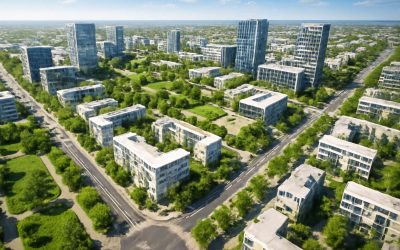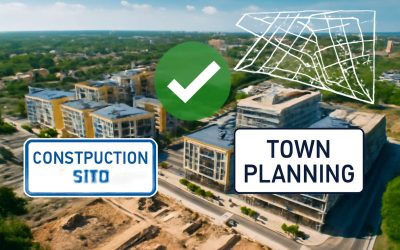
Urban planning is the process of designing and regulating the city’s transportation networks, land use, and communication infrastructure. It also involves the protection of natural resources and the preservation of cultural assets. Generally, urban planning is based on the principle of efficiency and livability.
Urban planning began in the United States in the late nineteenth century, when cities began spreading out. At the time, a number of urban centers were overcrowded, dirty, and unhealthy. However, planners changed development patterns and revitalized distressed areas. This helped protect the health and wellbeing of residents.
As the twentieth century began, many new urban centers were constructed to accommodate growing populations. These were not always well-planned. In fact, they often grew at a faster rate than central cities. Some older sections of major cities, such as Tokyo, were built without consideration for future growth. To natives, the older sections of these cities were difficult to navigate.
Today, a well-planned city is guided by a vision and a framework that helps its management achieve its goals. Newly planned cities often incorporate green spaces into their design, and use environmentally-friendly power sources and transportation systems. Planners are working to create a thriving and resilient place for people. They are also looking at how cities can adapt to climate change.
Today, cities are experiencing a slowing in population growth. That means that the demand for urban planners will increase as these areas grow. Moreover, most cities will have to face the challenges of informal settlements and waste management. If these problems are not addressed, cities may face a decline in business and residential communities.
Urban planning has a long history, one that has been driven by economic, environmental, and health considerations. Throughout that history, planners have strived to improve lives and maintain the natural environment. The history of urban planning is a story of success, failure, and discontinuities.
Although some of the earliest plans were made to make cities more efficient, it was not until the late 19th century that modern urban planning came into its own. As the world developed, a need to address the issue became clear. Planners realized that people needed to be spread out and away from the industry to reduce health problems. Planning also helped to improve transportation, particularly when it came to the public transport system. During the twentieth century, urban planners started to focus on the environmental and economic consequences of development.
The first planners began by establishing zoning ordinances. Zoning is a way for the government to control the development of a particular area. By dividing the area into zones, urban planners can decide what buildings will be located where.
As more and more people move to cities, the challenge is to ensure that they have easy access to transportation and accommodation. Planners must also work to eliminate potential trouble spots before they become a problem. Oftentimes, this means constructing affordable accommodations and creating public transportation systems that can help people to get around the city quickly.



0 Comments